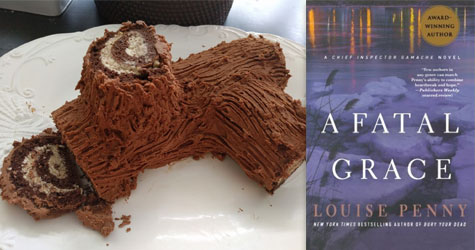
It’s been over a year since murder threw its long shadow over the village of Three Pines. The inhabitants have mostly recovered from the death of Jane Neal, and the empty Hadley house—site of so much pain and violence—has been sold to budding lifestyle authority, CC de Poitiers.
Alas, CC is not an ornament to her new home. Overbearing and obnoxious, her insistence on knowing what’s best for everyone has completely cowed her husband and daughter and set most of the villagers against her. So, when she’s murdered just after Christmas, in an elaborate setup during the annual curling match, she doesn’t leave behind a whole lot of mourners.
It’s under these circumstances that Chief Inspector Gamache of the Surêté du Québec is called back to the village he has such fond memories of, even as he’s unofficially investigating the death of a homeless woman in Montreal as a favor to his counterpart there. When it becomes clear that the two cases are connected, Inspector Gamache will have to uncover secrets that Three Pines thought long buried.
I really loved the literary aspects of this case and, by extension, book (though, whoa, it came as quite a shock to me to read unattributed excerpts of poetry from one of my favorite volumes presented here as the work of the local fictional poet. Once I got over my surprise, however, I was quite pleased that Louise Penny had chosen that book as one of the sources for Ruth’s work.)
I was less enamored by the construction of the murder mystery itself, reading all the red herrings disbelievingly as it had been fairly obvious early on, to me at least, whodunnit. That said, A Fatal Grace is written with Ms. Penny’s trademark humanity and humor, and spending time with her elegant writing and delightful cast of characters is always worthwhile.
Read Angie Barry's review of A Fatal Grace!
Especially at Christmastime, with the delightful tradition of Reveillon and all the wonderful culinary specialties that go with it! Nature of the Feast offers readers an accompanying recipe for “Steak Frites with Mayonnaise,” but I felt that far too prosaic. So, here in the August heat, I instead decided to make the other recipe in the cookbook—a traditional Christmas dessert:
Bûche de Noël (Traditional “Yule Log” Christmas Cake)
*Makes 8 to 10 servings
Ingredients
For the Chocolate Sponge Roll
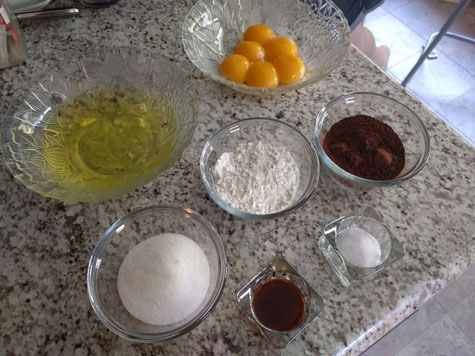
Nonstick cooking spray
¼ cup (66 g) all-purpose flour, plus more for coating the pan
6 large eggs, separated
¼ cup (50 g) plus 2 tablespoons granulated sugar
½ teaspoon salt
¼ cup (36 g) unsweetened cocoa powder
2 teaspoons pure vanilla extract
For the Chestnut Filling
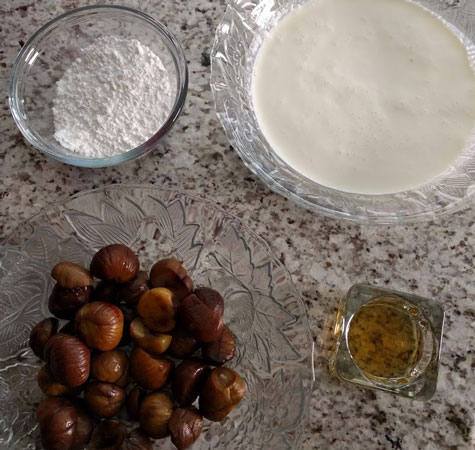
1 cup (5 ounces/150 g) peeled and roasted chestnuts
¼ cup (27 g) powdered sugar
1 cup (250 ml) heavy (whipping) cream
1 teaspoon pure vanilla extract or 1 tablespoon Cointreau or other orange liqueur
For the Quick Chocolate Frosting
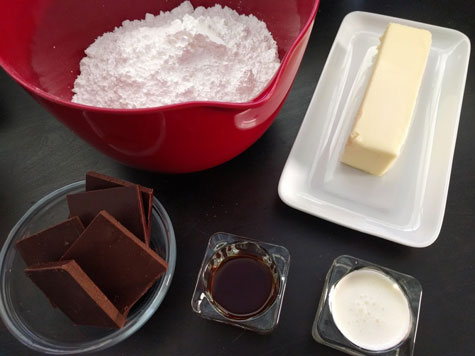
4 ounces (110 g) semisweet chocolate
2½ cups (269 g) powdered sugar
8 tablespoons (4 oz/113 g) unsalted butter, at room temperature
2 teaspoons pure vanilla extract
2 to 3 tablespoons light or heavy cream, or as needed
Instructions
1. Make the cake: With the rack in the center position, preheat the oven to 350°F/ 177°C. Spray a 13 × 17-inch/33 × 43-cm jelly-roll or halfsheet pan with nonstick cooking spray. Line the pan with parchment paper (be sure that part of the parchment paper extends over one of the long sides of the pan). Spray the parchment paper with more cooking spray and dust it lightly with flour.
2. Put the egg yolks and the ¼ cup granulated sugar in a large bowl and beat with a handheld mixer until they turn a light yellow, the sugar is dissolved, and the yolks form a ribbon when they fall from the beaters. Wash the beaters thoroughly. In a clean smaller bowl, beat the whites, the remaining 2 tablespoons granulated sugar, and the salt together until the whites hold stiff peaks when the beaters are lifted from them. Sift the flour and cocoa over the beaten yolks, add one quarter of the beaten whites, and start folding it all together with a large metal whisk or rubber spatula until just a few streaks of the egg whites remain. Add the remaining beaten whites and fold in completely. Scrape the batter into the prepared pan and smooth out the top. Bake until the cake is firm when poked in the center and the edges are nearly crisp and pull away from the pan, about 12 minutes. Transfer the cake to a cooling rack and cool to room temperature, about 10 minutes.
3. While the cake is cooling, make the chestnut filling: Grind the chestnuts with the powdered sugar in a food processor until the chestnuts are finely ground and the sugar is blended in. In a chilled bowl, beat the heavy cream with a handheld mixer or a whisk until the cream holds stiff peaks when you lift the beaters or whisk from the cream. Gently whisk or mix in the chestnut mixture.
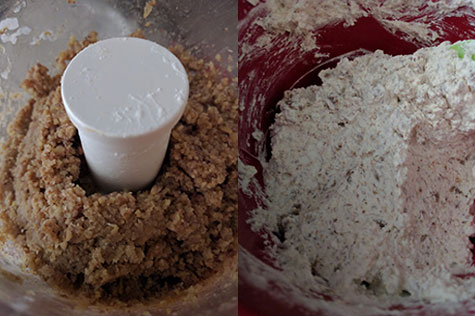
4. Using the overhanging parchment paper along one of the long sides of the cake, remove the cake from the pan onto a flat surface. Spread the chestnut-cream filling over the entire surface of the barely cooled cake. Let the coated cake sit for a few minutes to soften up. If the pan you baked the cake in is relatively clean, you can reuse it to store the filled cake roll. If not, wash it and dry it while the filling softens the cake.
5. Starting at one of the long ends, roll up the cake jelly-roll style. If the cake sticks to the paper in places, loosen it gently using a long, thin metal spatula. (In any event, the cake will most likely crack in places as you roll it. All of these “imperfections” will be inside the roll where no one can see them or will be covered with frosting.) When the cake is about halfway rolled, move the cake over the baking sheet and finish rolling the cake so it ends up—diagonally—on the baking sheet. Cover the cake with plastic wrap and chill for at least 4 hours and up to 1 day.
6. Up to 4 hours before serving the cake, make the frosting and assemble the cake: To make the frosting, put the chocolate in the top of a double boiler (or in a heatproof bowl that sits well above the bottom of a saucepan filled with about 2 inches of simmering water). With the heat on low, melt the chocolate, stirring from time to time. Remove the container of chocolate from over the boiling water once melted. Beat the powdered sugar, butter, and vanilla together in a bowl with a handheld electric mixer until the butter is fully incorporated into the sugar. Scrape in the melted chocolate, add the vanilla, and beat until smooth. Add enough of the cream to make a smooth, soft, spreadable frosting. Hold at room temperature.
7. Cut two pieces from one end of the chilled cake roll to use as “limbs” on the log Make a diagonal cut about 2 inches (5 cm) at the thinner end. Make a second cut of the same size. Use a large dab of the frosting to “glue” these two “limbs” to opposite sides and ends of the cake roll. Using about one-third of the frosting, lightly coat the entire top, sides, and limbs of the cake. Be sure to leave the ends of the log and limbs unfrosted, so the “tree rings” remain exposed. Don’t worry if this crumb layer picks up crumbs or smears with some of the chestnut filling—that is its purpose. The final frosting will cover all imperfections. Chill the crumb-coated cake for about 1 hour.
8. Apply the rest of the frosting to the cake in an even layer, again leaving the ends of the log and limbs unfrosted. Lightly scrape a fork lengthwise along the main part of the log and along the limbs to simulate tree bark. Serve the cake right away or refrigerate for up to 8 hours. If refrigerated, bring to room temperature 1 hour before serving. Cut into fairly thin (¾-inch/2-cm) slices and serve.
I had to get my lovely assistant (aka my neighbor, Karin) to teach me how to separate eggs for this project. And then, of course, I totally forgot that the immersion blender I bought for an earlier Cooking the Books column came with a whisk attachment, so she had to watch me beat the separated parts by hand forever, it seemed, before my little grey cells rubbed together and we finished the rest in minutes.
I was a little concerned that the cake and chestnut filling, while delicious, were less sweet than most desserts when tasted on their own. However, much in the same way that Louise Penny’s immense sense of style and mastery of craft can add layers to a straightforward murder, the chocolate frosting more than bound the flavors together in a delectable treat that was just as enjoyable in summer as in its traditional midwinter.
One note: readers cooking along with me will notice that the vanilla that’s listed several times in the ingredients sections never actually makes an appearance in the recipe till the very last segment. I chose to assume that it’s meant to be added along with the ingredient that precedes it in each list (though I admittedly used Grand Marnier for the chestnut filling.) Do share in the comments your experience with this or the other recipes connected to A Fatal Grace and get a free download of the cookbook, The Nature of The Feast.
Check out last week's “French Canadian Pea Soup” from Still Life!
To learn more or order a copy, visit:
Doreen Sheridan is a freelance writer living in Washington, D.C. She
microblogs on Twitter @dvaleris.
Read all posts by Doreen Sheridan for Criminal Element.
